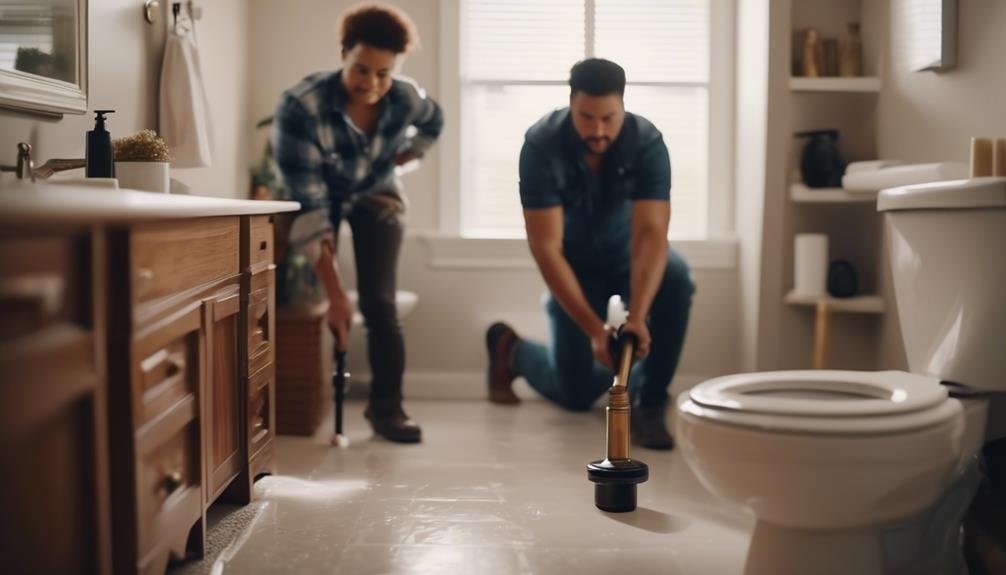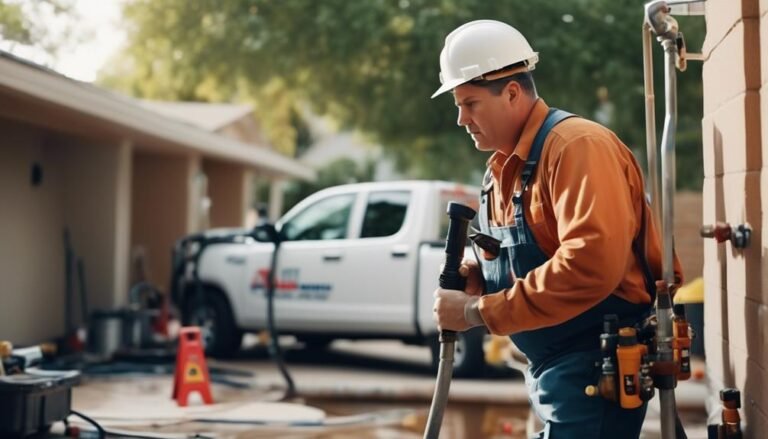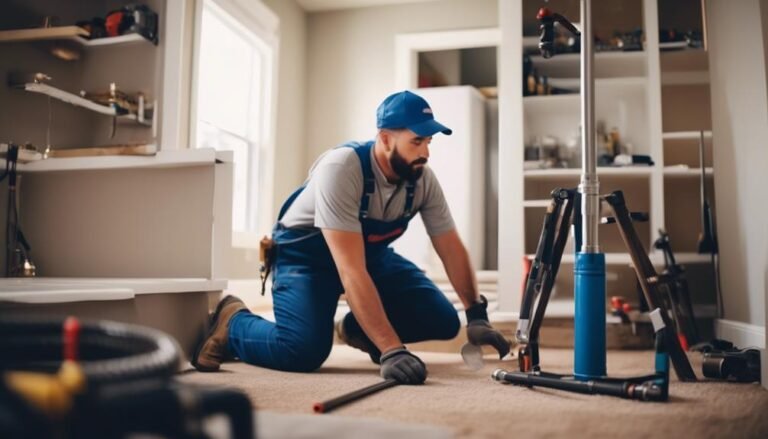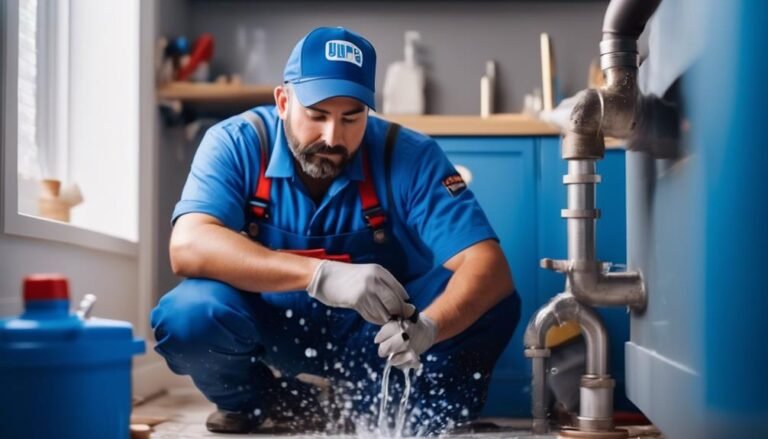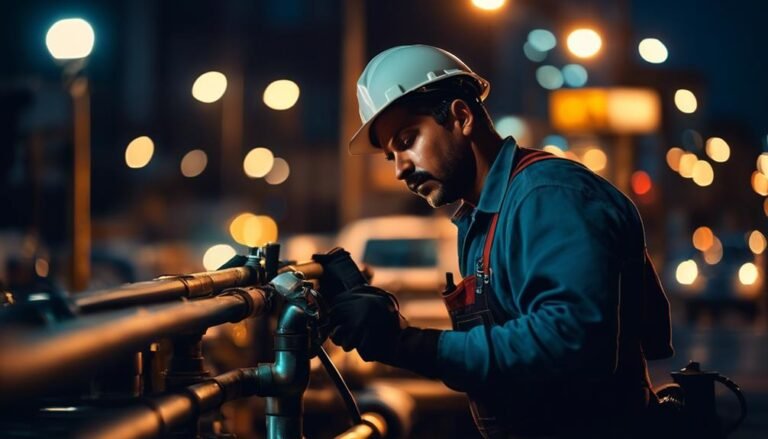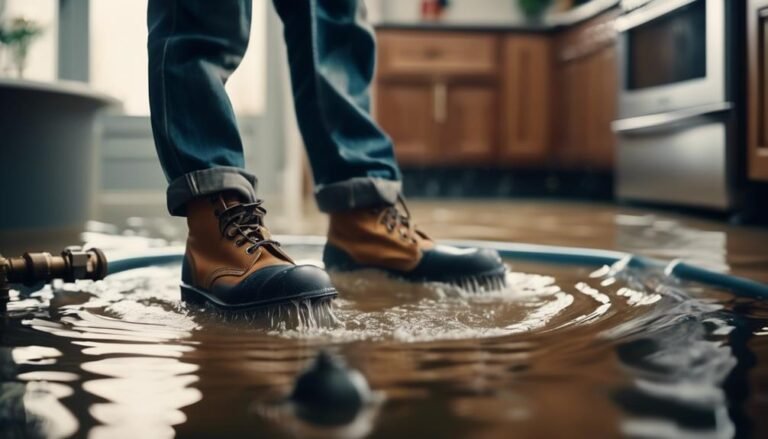6 Quick Fixes for Emergency Plumbing in Antonio
Dealing with a sudden plumbing issue in Antonio can be overwhelming. However, there are six practical solutions to help you handle the situation and prevent further damage.
Whether it's a burst pipe, leaky faucet, or clogged drain, these fixes can provide temporary relief until professional help arrives.
Let's take a closer look at these solutions and understand how they can help you in this unexpected situation.
Key Takeaways
When a plumbing emergency strikes in Antonio, it can be really stressful. But don't worry, there are six simple solutions to help you manage the situation and prevent any further damage.
Whether you're dealing with a burst pipe, a leaky faucet, or a clogged drain, these fixes can offer some temporary relief until the professionals arrive.
Let's take a closer look at these solutions and understand how they can help you in this unexpected situation.
Quick Fix #1: Unclogging Drains
To unclog a drain at home, you can start by using a plunger. Make sure there's enough water in the sink or tub to cover the bottom of the plunger, then place the plunger over the drain and push up and down to create suction.
If this doesn't work, you can try mixing a solution of baking soda and vinegar and pouring it down the drain, followed by flushing with hot water.
Another method is to remove the drain cover and manually remove any visible debris or hair that may be causing the clog.
If these methods fail, you might consider using a drain snake to reach and remove the clog from the drain.
However, if the clog persists and you're facing a plumbing emergency, it's best to contact a plumber in San Antonio for professional assistance. Acting quickly is essential when dealing with clogged drains to prevent further damage.
Quick Fix #2: Fixing Leaky Faucets
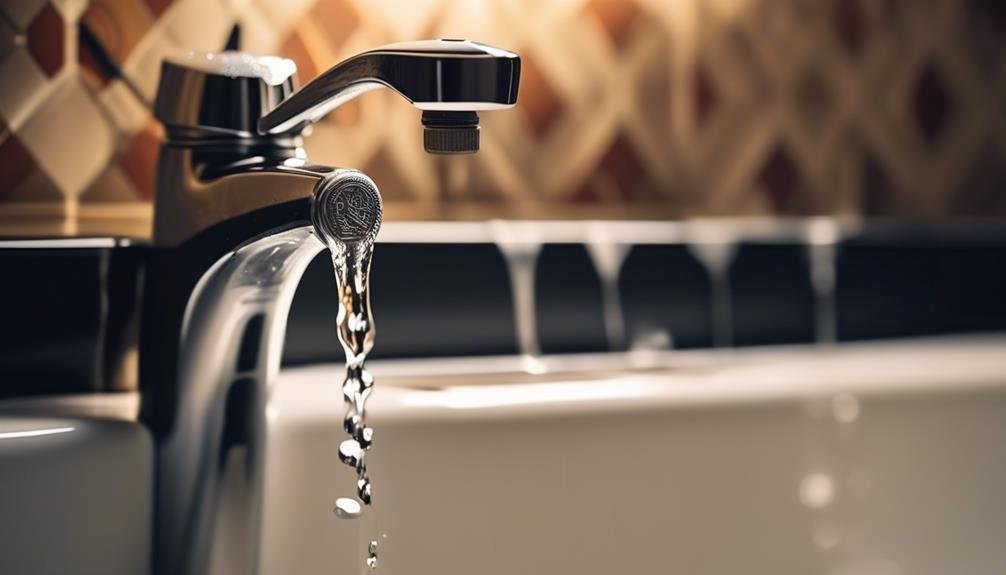
When you have a leaky faucet, the first step is to figure out what type of faucet it's so you can fix it properly. In an emergency plumbing situation in San Antonio, it's important to act fast to find and solve the problem.
Start by turning off the water under the sink and plugging the drain to avoid losing small parts. Then, depending on the type of faucet—whether it's compression, cartridge, ceramic disk, or ball—replace any worn-out O-rings, washers, or other broken parts inside the faucet to stop the leak. Also, clean off any mineral buildup and check the valve seat for damage to make sure you fix the problem right.
Once you've made the necessary replacements and repairs, put the faucet back together, turn on the water, and check for leaks to make sure it's fixed.
Following these steps will help you quickly fix your leaky faucet and prevent water waste in your home.
Quick Fix #3: Repairing Burst Pipes
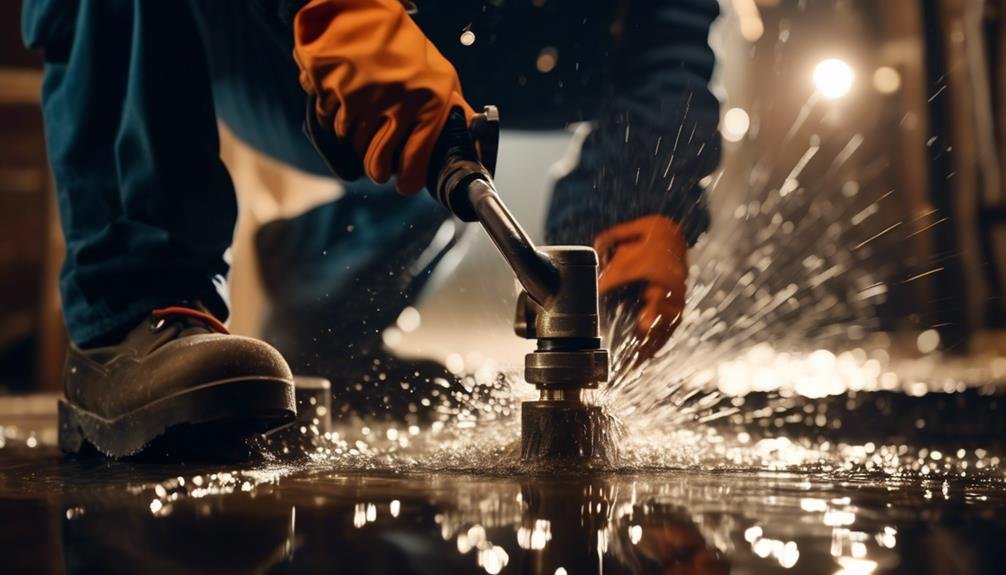
If a pipe bursts in your home, the first thing you should do is turn off the main water valve to stop the water flow.
After that, use pipe repair clamps or wraps to temporarily seal the burst pipe and prevent more water damage.
It's crucial to reach out to a professional plumber to assess and fix the burst pipe for a permanent solution.
Pipe Assessment Tips
When dealing with a burst pipe at home, it's important to act quickly. Look for signs of water damage and wet spots, as these can indicate a burst pipe. Turning off the main water supply right away will help prevent further flooding and damage. Don't forget to drain the faucets and turn on the cold water taps to relieve pressure in the pipes.
Take a close look at the affected area for cracks, bulges, or significant corrosion on the pipes. You can consider using pipe repair clamps or epoxy compounds as temporary solutions until a professional plumber arrives.
These steps are crucial in an emergency situation to prevent further damage and ensure the safety of your home. If the situation is severe, don't hesitate to seek professional plumbing services from emergency plumbers.
Temporary Pipe Patching
When a pipe bursts, it's important to act quickly to prevent further damage. One temporary solution for patching a burst pipe is to use a pipe repair clamp or wrap rubber gasket tape tightly around the affected area. Another option is to apply epoxy putty or plumbing repair tape to seal off the burst pipe securely. You can also use a compression repair coupling to temporarily patch the burst pipe and stop any leakage.
If you don't have these supplies on hand, you can consider using a rubber sleeve or hose clamps to cover the burst portion of the pipe until a professional plumber arrives. A pipe repair kit that includes a combination of rubber and metal patches can also provide a temporary fix for the burst pipe.
These temporary patching methods can help you address the issue quickly while waiting for professional assistance.
Quick Fix #4: Addressing Water Heater Issues
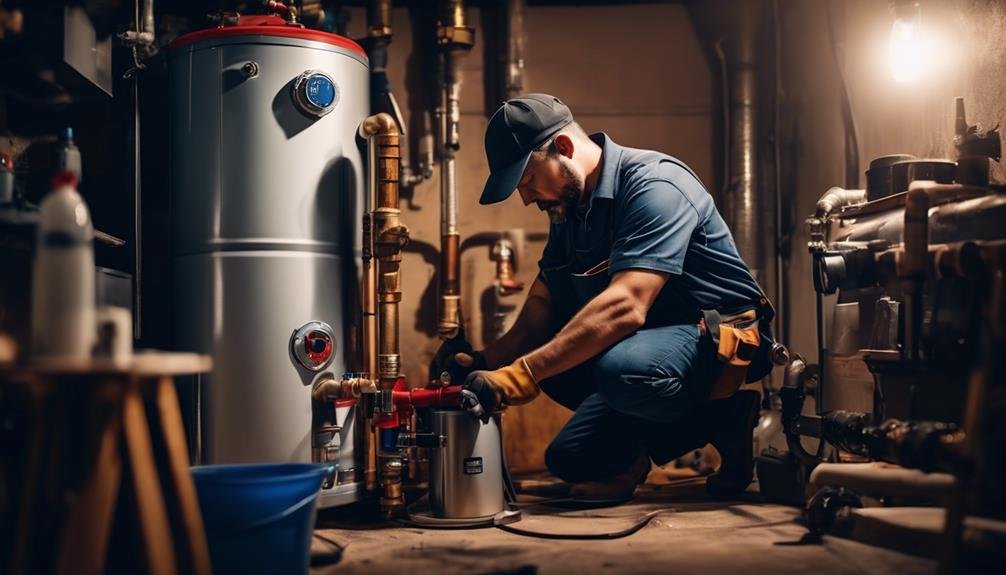
Is your water heater acting up? Start by checking the pilot light for any issues. Here are some simple fixes for common water heater problems:
- If the pilot light is out, try relighting it to see if that solves the problem.
- Rusty water or strange noises could mean there's sediment buildup. Consider flushing the tank to clear it out.
- Take a look at the thermostat settings on your water heater and make any necessary adjustments.
- Inconsistent hot water could be due to a faulty heating element. Check it for potential problems.
- If the problems continue, it's best to call a professional plumber in San Antonio to thoroughly assess the situation and make any needed repairs.
Quick Fix #5: Managing Toilet Clogs
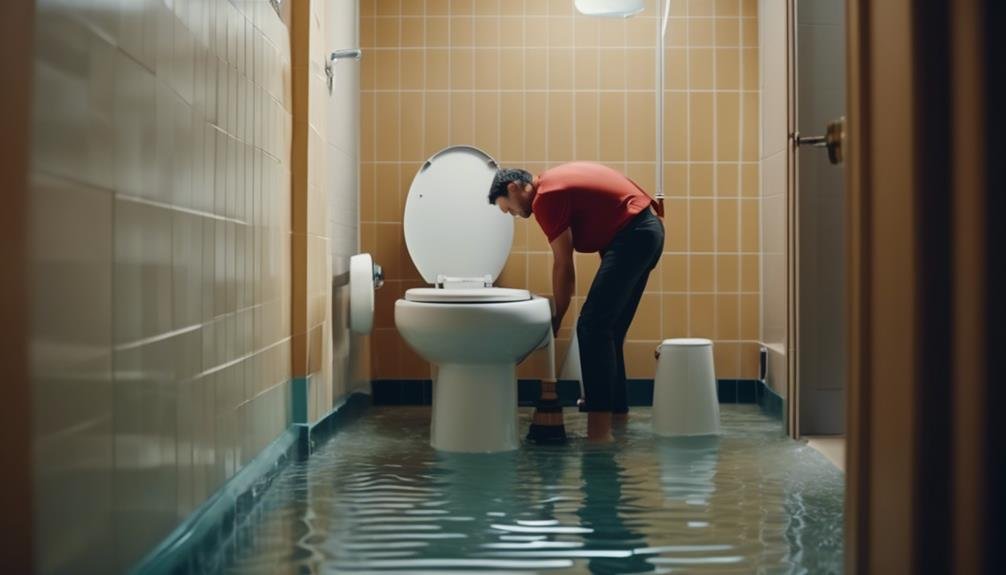
Dealing with a stubborn toilet clog can be a real headache, but there are effective ways to manage the issue.
Start by using a plunger to create suction and pressure to clear the blockage.
If that doesn't work, you can try using hot water and dish soap, a plumbing snake, or a mixture of baking soda and vinegar to dissolve the clog.
And if all else fails, it's best to seek the assistance of a professional plumber to address the problem.
Plunger for Minor Clogs
Got a minor toilet clog? No worries! You can easily clear it with a plunger. Here's how:
- Put on some rubber gloves for an easy cleanup.
- Position the plunger over the drain and make sure it forms a tight seal.
- Give the plunger some good, strong pushes to unclog the toilet.
- Repeat the process a few times if needed.
- Once the water starts draining, flush the toilet to make sure the clog is completely gone.
Using a plunger for minor clogs is a quick and effective way to prevent any water damage in your bathroom.
Chemical Drain Cleaners
Dealing with a stubborn toilet clog that just won't budge, even after using a plunger? Consider using chemical drain cleaners as a quick and effective alternative. These cleaners break down and dissolve the organic materials and debris causing the clog.
But remember, they can be harmful if not used correctly, so always follow the instructions and safety guidelines provided by the manufacturer. If the clog persists after using a chemical drain cleaner, it's best to contact a professional plumber for further assistance.
In Antonio, it's important to know when to seek help from plumbers who can efficiently address the plumbing issue and ensure the safety of your property during an emergency plumbing situation at home or in a business.
Quick Fix #6: Handling Sewer Line Problems
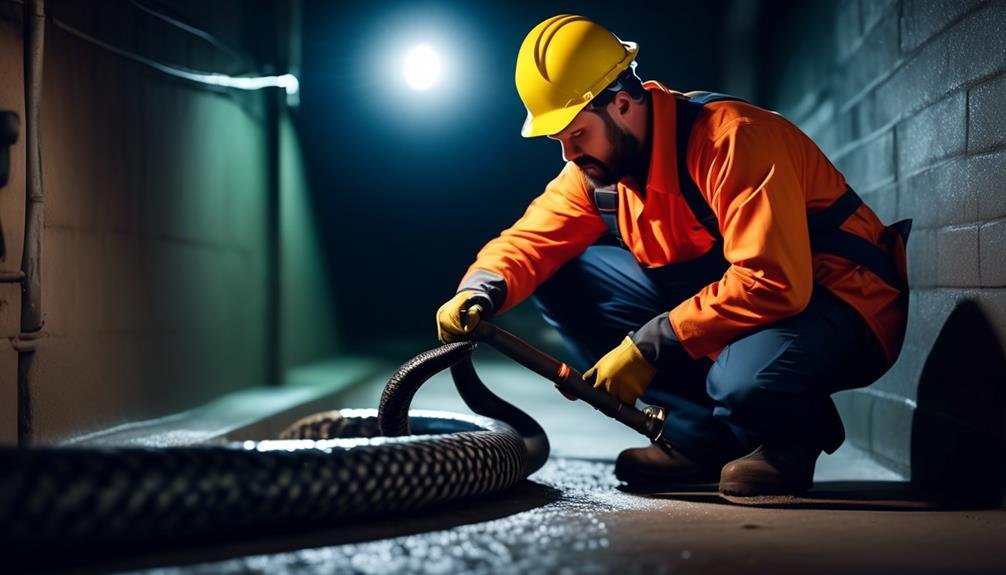
Do you notice any signs of sewer line problems in your home, like slow draining, gurgling noises, foul odors, or water backups in your plumbing system? It's crucial to get professional help right away to fix the issue. In San Antonio, sewer line problems can lead to serious issues like backups and leaks in your plumbing system.
When dealing with these concerns, it's important to call an experienced emergency plumber. Here are some tips on how to handle sewer line issues effectively:
- Avoid using chemical drain cleaners, as they can cause more damage.
- Contact a professional plumber to handle any plumbing emergencies related to sewer line problems.
- Consider shutting off the main valve to prevent further water backups until the plumber arrives.
- Professional plumbers can use advanced techniques like camera inspections to identify the exact cause of sewer line problems.
- Seek immediate professional assistance to address sewer line issues and prevent further damage to your plumbing system.
Frequently Asked Questions
How Do You Avoid a Plumbing Emergency?
Hey there, homeowners! To steer clear of a plumbing emergency, it's important to keep up with regular maintenance for your pipes. Be mindful of what you flush down the toilet or drain, as certain items can cause clogs and backups. Another important step is to insulate your pipes, especially in colder weather, to prevent freezing and potential bursts.
Knowing the location of your main shut-off valve is crucial in case of a plumbing issue. Being able to quickly turn off the water can minimize damage to your home. You might also want to consider installing a water leak detection system. This can help you catch any problems early on and prevent them from turning into bigger issues.
What Does a Plumber Fix?
As a homeowner, you may encounter issues like leaking pipes, clogged drains, gas leaks, water heater problems, and slab leaks. These issues can lead to water damage, flooding, property damage, and even create dangerous situations. It's important to address these problems promptly to prevent further damage to your home.

